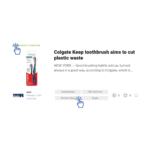In the era of Covid-19, the e-commerce industry saw a great deal of growth and transformation. The impact of the lockdown resulted in more people buying online.
There were also changes in the way online shopping orders were fulfilled, with 42 percent of orders fulfilled by local stores and small fulfillment centers, resulting in a huge change in logistics. But will this trend continue in 2021? And what other e-commerce trends are we likely to see in 2021?
According to Sarah Hofstetter, president of Profitero, a performance analytic platform, there are several trends will are likely to see in 2021.
Pandemic-accelerated adoption
Hofstetter, who also serves as a co-host of the Brave Commerce podcast, says in the past, people had the notion that only physical products could be bought online. But today, we have seen consumers ordering more services like food and grocery delivery online. We have also seen the rise of other digital services like last-mile fulfillment centers.
“If we were having this conversation a year ago and you asked most people, ‘What does e-commerce mean?’ they would say, “Shipped in a cardboard box, landing at my front door within a few days of my ordering it,” Hofstetter said. “Now if you ask people what e-commerce is, it could extend to DoorDash or Uber, Instacart, Prime Fresh, curbside pickup, whatever it is. So as long as the order is digitally initiated, it’s e-commerce.”
With the introduction of a vaccine in 2021, we might be soon seeing the end of Covid-19. Naturally, we want to know whether these habits will stick.
The increase in the age of online shoppers
In the past, e-commerce was mostly a preserve of a younger consumer base. But according to Hofstetter, there has been a broader adoption of e-commerce among all age groups.
“Prior to COVID, e-commerce was generally done by the non-AARP crowd, and so with more older people being immunocompromised, they adopted e-commerce as a habit that I don’t know would have happened,” she said. “It could have been a decade before it actually happened.”
Hofstetter explained that whether this trend will continue post-pandemic will depend on social-economic factors such as affordability.
Will consumers be ready to pay a premium price for quick delivery? Will they take advantage of curbside pickup? This will mostly depend on the product and whether the consumers will want to touch and feel it before making a buying decision.
The rise of small-format stores
In 2020, we saw the rise of small-format stores and it appears the trend will continue. Even the big brick-and-mortar stores such as Target and Walmart are now beginning to transform their stores into micro fulfillment centers and dark stores.
But with consumers still preferring to buy certain products in traditional stores, retailers will need to utilize data insights to determine which products can be sold online and which should be sold through physical stores.
“If you even look at the reverse behaviors of consumer electronics 10 years ago, they would research offline and buy online, and that’s what killed so many consumer electronics stores—they were basically showrooming for e-commerce,” Hofstetter explained. “So the question becomes, how much do you need to touch and feel something, and how much real estate do you really need?”
Hofstetter warned that analytics may not yet offer a clear picture of what consumers may buy online versus in traditional stores. Due to the lack of enough data, retailers will need to perform large predictive analysis to determine what they should store in their dark stores versus what should remain in their showrooms. While the rise of dark stores is here, retailers are still tasked with finding the right balance.
“A smaller footprint store may make sense for the consumer shopper experience, but it may be just a great reconsideration of purposing for last-mile facilitation,” Hofstetter said.
What retailers should do differently in 2021?
Now more than ever, it’s important for retailers to have a growth mindset. They will need to consider how to incorporate dark stores, micro fulfillment centers, and segmented stores into their models.
However, they will also want to ensure they don’t overshoot themselves by remembering there will always be shoppers who prefer to make their purchases in traditional stores. Therefore, while there will continue to be huge growth in e-commerce in 2021, traditional stores will still have a gap to fill.













No Comments
Leave a comment Cancel